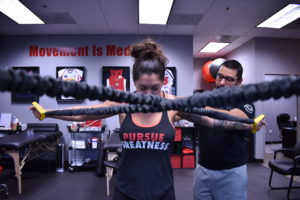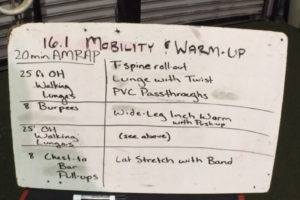Patellar tendonitis or tendonopathy is a common condition that is characterized by pain at the front of the knee, either above, below, or on the knee cap.
It is often accompanied by inflammation and swelling in the short term, but pain can stick around long after the inflammation subsides.
Patellar tendon pain can be tricky to deal with, especially if it’s affecting your walking, running, or training. Fortunately, it can be treated surprisingly well with consistency and some well-designed intentional loading.
Tip #1: Don’t just rest it!
While rest might be helpful if this is a brand new injury (in the swelling stage), if you’ve been dealing with this chronically, you’ve likely found that rest doesn’t help you in the long term. More often than not, the tendon is irritated due to insufficient strength/endurance to meet its daily demands, so resting the tissue can have the undesired effect of further weakening the tendon and muscle. While we do want the tissue to calm down, we simultaneously want to improve its capacity to handle its daily load. The best way to relieve pain and start developing strength with an irritated patellar tendon is to add in a strengthening program that starts with isometrics
Tip #2: Don’t push through the pain! (#NoPainNoGains)
Generally, pain is our body’s way of telling us that it needs a change. We need to respect that message. Rather than running or training through the pain, it’s important that you first determine your threshold for flare-up and plan to train underneath that for at least one week. For example, if you can run three miles without pain, but the fourth mile flares you up, you’re going to stick with three and supplement the remainder of your training with something that doesn’t aggravate you (water running, swimming). Likewise, if you can squat 100# with no pain, but 150# does you in for 2 days, train at 100# or under and supplement the remainder of your training with some single leg work (Romanian deadlifts, pistol squats, etc). Additionally, you’ll add in tendon strengthening, starting with isometrics.
Tip #3: Try some tissue work through the quads!
Many times, people with patellar tendon pain are also dealing with tightness through the quads (which is also a symptom of overtraining and inadequate recovery!) Getting some deep tissue work at SP or spending 2-3 minutes foam rolling the quads prior to exercise can often help with pain relief by relieving some of the compressive forces through the knee and relieve tension on the patellar tendon.
Tip #4: Manage patellar tendon pain using isometrics
If you’re dealing with patellar tendon pain, use this simple protocol to control your pain on days when you’re flared up:
Decline Squat Holds: Start with both heels elevated on a plate or ramp. Push your knees forward into a half squat hold for 45-60 seconds. Repeat five times. Then go about your day. You can perform one set of these five times per day. Expect your pain to rise 2-3 points (out of 10) during these exercises and settle back down afterward.
Single Leg Decline Squat Hold. If regular squats don’t feel challenging enough, you can do these exercises standing on one leg. Sink into a single leg half squat on a decline for 45-60 seconds. Repeat 5 times. Perform them five times per day. Expect your pain to rise 2-3 points (out of 10) during these exercises and settle back down afterward.
Tip #5: Eliminate patellar tendon pain using eccentric strengthening
Once you’ve calmed down your pain using the isometrics, you should strengthen your patellar tendon three times per week using controlled, 5 second (eccentric) lowers on the decline movements described above. Start your first week with 3 sets of 15 and add weight using a dumbbell or kettlebell each week while decreasing your reps!
Ex.)
Week 1: 3 sets of 15 (no weight, or weight that is challenging for 15 reps)
Week 2: 3 sets of 12 (heavier)
Week 3: 3 sets of 10 (heavier)
Week 4: 3 sets of 8 (heavier)
Expect your pain to swing up to three points higher during exercise, but it should settle down by 24 hours following your session. If you’re still in pain at 24 hours, go back to your isometric holds until your pain is back at baseline then restart the strengthening at your most recently tolerated spot. For example, if you had no problem with 3 x 12 with 15#, but flared up after 3 x 10 at 20#, redo the 3 x 12 with 15#.
Try these out, and if you want to go through a full assessment and get customized tissue work, give us a call at Sports Performance Physical Therapy!
As always, I hope this helps! If you have any questions or would like to read about certain topics, send us an email at TeamSP@SportsPerformancePT.com.
If you want to improve your mobility, balance, and knee strength on your own at home, start with our 6-week program: <<CLICK HERE>>.
-Dr. Marissa Rescott, PT, DPT, CF-L1
For more tips on optimizing athletic performance FOLLOW US on:
- Instagram: http://www.instagram.com/SportsPerformancePT
- Facebook: http://www.facebook.com/SportsPerformancePT
- YouTube: http://www.youtube.com/c/SportsPerformancePT













